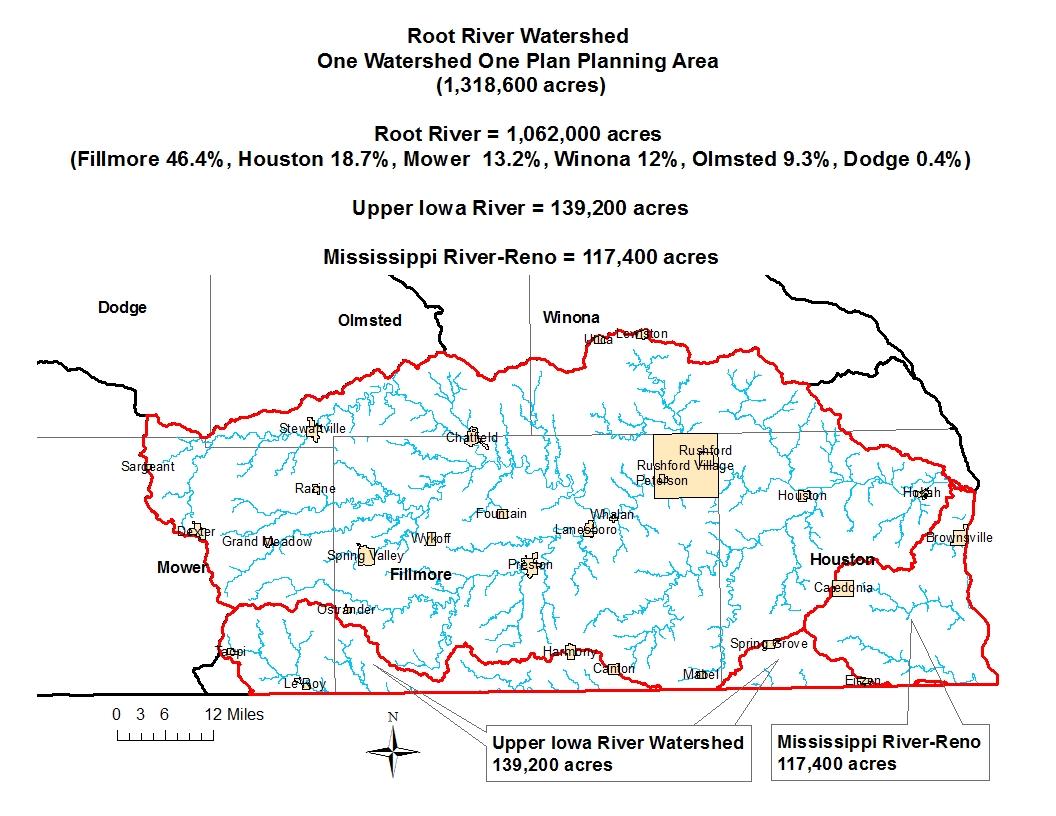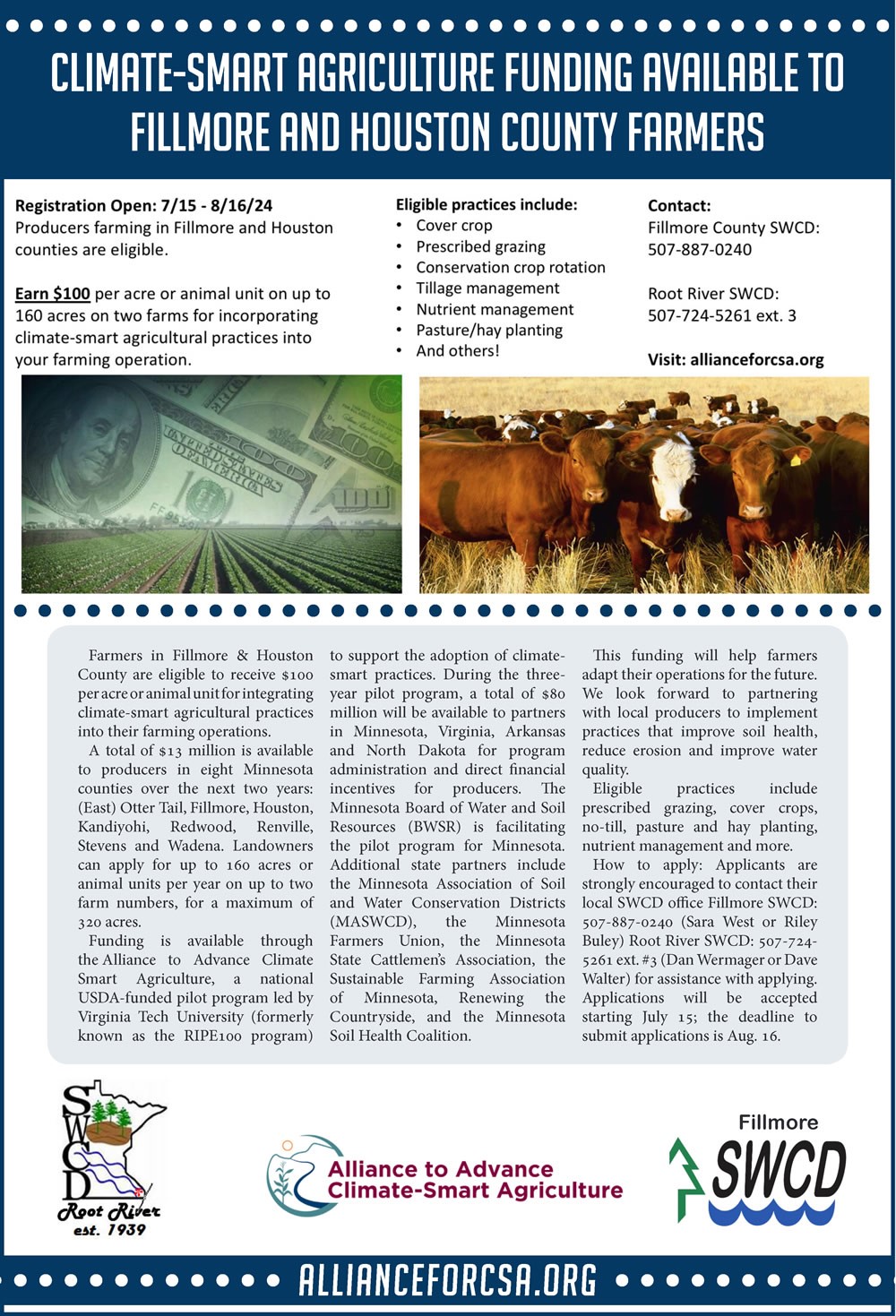Notice Date: 6/4/25
Comment Period Closes: 8/3/25
The Root River Watershed Partnership is initiating a plan renewal amendment of the Root River Comprehensive Watershed Management Plan for the next 10-year planning cycle and invites all interested stakeholders to participate in this process.
About the Root River Watershed Planning Area
The Root River Watershed is located in southeastern Minnesota and spans portions of Dodge, Fillmore, Houston, Mower, Olmsted, and Winona Counties. The watershed encompasses a diverse landscape of agricultural lands, forests, karst features, cold water streams, and thriving communities. The planning area for the Root River Comprehensive Watershed Management Plan includes the Upper Iowa and Mississippi–Reno watersheds for a total drainage area of over 1.3 million acres (see map below).
Purpose of the Plan Renewal Amendment
The original Root River Comprehensive Watershed Management Plan was approved by the Board of Water and Soil Resources (BWSR) in December 2016, with an expiration date of December 2026. The time has come to review the plan to reflect, updated science and data, local needs, and evolving state and federal policies by clarifying priorities, goals, and actions. This process provides an opportunity to:
- Evaluate progress toward achieving previous water quality and conservation goals;
- Incorporate new local plans, projects, and ordinances;
- Validate and streamline priority issues and focus areas based on stakeholder feedback and scientific assessment;
- Enhance inter-agency coordination and implementation efforts.
The amended plan will be submitted to the Board of Water and Soil Resources for approval
and will be valid for 10 years from the approval date.
Invitation for Public Input
As part of this plan renewal amendment process, all stakeholders—local government units, state agencies, landowners, nonprofit organizations, and members of the public—are invited to submit water management issues they feel the updated plan should address. We are especially interested in input related to:
- Local land use plans, zoning ordinances, or comprehensive plans
- Special projects or infrastructure (e.g., wastewater facilities, stormwater systems)
- Source water and wellhead protection plans
- Habitat and natural resource protection initiatives
- Agricultural conservation needs or drainage management
- Flood risk reduction and climate resilience strategies
- Any other water-related concerns or opportunities for coordination
Comments and input should be submitted within the 60-day public notice period ending August 3rd 2025.
How to Submit Comments
Please send your input in writing to:
Nikki Wheeler, C/O Fillmore SWCD
PO Box 45, Preston, MN 55965
nikki.wheeler@fillmoreswcd.org
Electronic submissions via email are encouraged. All feedback received will be considered in the plan update process and may help shape future water and land management priorities in the Root River Watershed.
We appreciate your engagement in ensuring that the next 10-year Root River Comprehensive Watershed Management Plan continues to support a resilient and sustainable watershed for all its communities and ecosystems.


